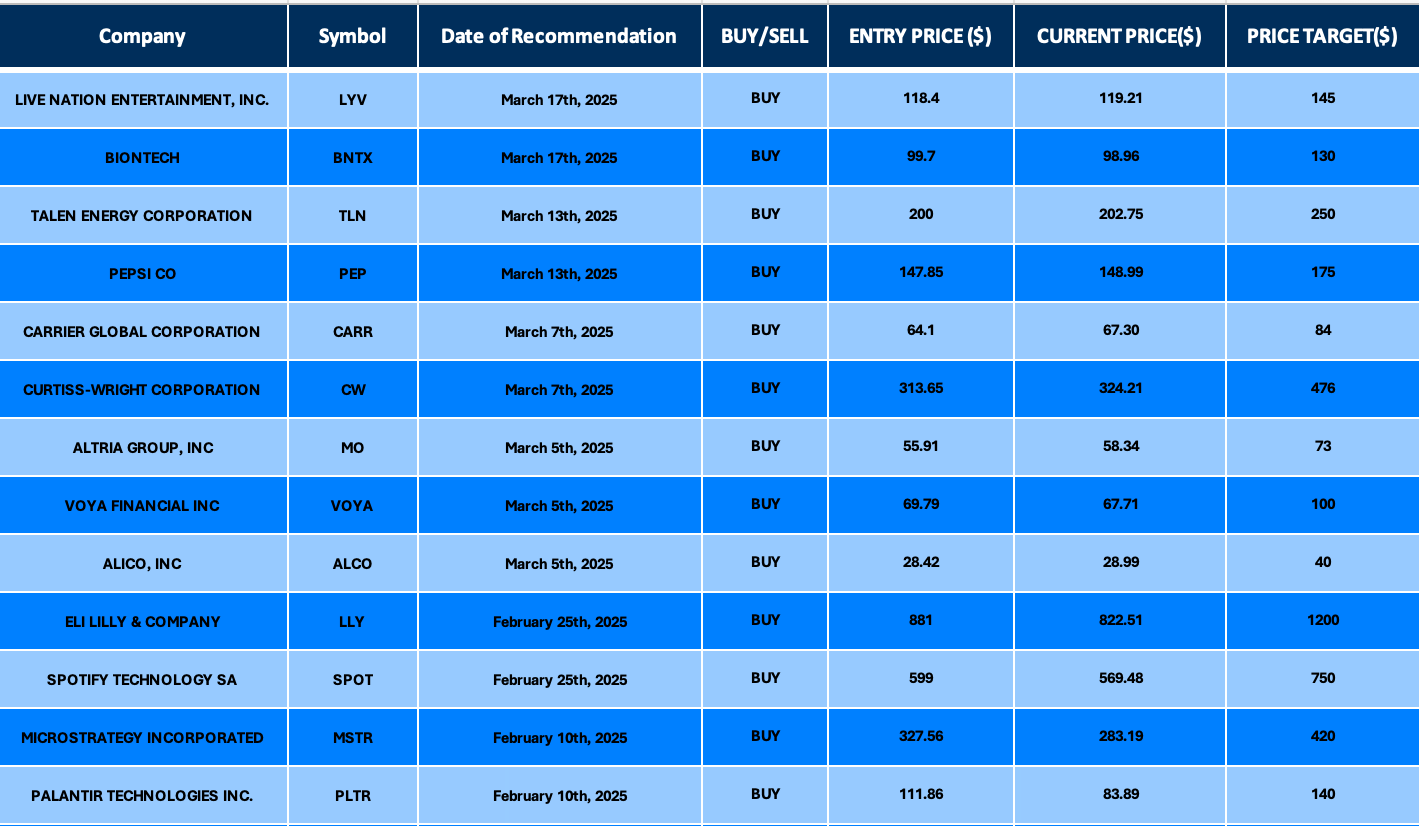
Date Issued – 20th March 2025
Preview
Asian markets rallied as the Federal Reserve signaled potential rate cuts later this year, while copper surged past $10,000 per ton amid tariff concerns. The MSCI Asia-Pacific Index hit a four-month high, supported by gains in Taiwan, Australia, and South Korea, though Chinese stocks lagged. Swap markets across Asia priced in further rate cuts, with Indian and Thai bonds benefiting from disinflation and a weaker dollar.
In the U.S., Treasury yields fell as Fed Chair Powell acknowledged growth risks, reinforcing expectations for at least two rate cuts in 2025. Meanwhile, copper’s rally, fueled by U.S. tariff threats and global supply disruptions, highlighted trade tensions’ impact on commodities. Investors are eyeing opportunities in emerging market bonds, U.S. tech stocks, and industrial metals, while monitoring trade policy and monetary easing strategies.
Asian Markets Rally as Fed Signals Dovish Stance
Asian equities climbed alongside U.S. futures after the Federal Reserve signaled potential rate cuts later this year, easing concerns about inflationary pressures from tariffs. The MSCI Asia-Pacific Index surged to its highest since November, with gains in Taiwan, Australia, and South Korea, while Chinese stocks lagged amid tech sector weakness. Copper prices surpassed $10,000 a ton on tariff fears, while the U.S. dollar held near recent lows. In contrast, European futures edged lower, and the Australian dollar dipped following a surprise drop in employment data. Fed Chair Jerome Powell’s measured tone on inflation and recession risks buoyed investor sentiment, supporting a bond rally and boosting rate-cut expectations.
Investment Insight
The Fed’s dovish commentary signals a favorable backdrop for risk assets, particularly in emerging markets, as dollar weakness could drive capital inflows. However, investors should remain cautious on Chinese equities, where stretched valuations and regulatory risks persist. U.S. tech stocks may offer better near-term risk-reward opportunities following their recent correction. Diversifying exposure to industrial metals like copper could also benefit portfolios amid rising tariff-driven supply concerns.
Asian Swaps Signal Growing Bets on Rate Cuts Amid Dollar Weakness
Swap markets across Asia are increasingly pricing in further interest-rate cuts as a weakening U.S. dollar strengthens regional currencies, creating room for central banks to focus on growth. Indian swaps are factoring in 37 basis points of additional easing, supported by lower-than-target inflation and falling oil prices. Malaysian swaps now fully expect a 25-basis-point reduction within 12 months, reflecting trade risks from U.S. semiconductor tariffs. Meanwhile, Thai baht swaps indicate 48 basis points of cuts over the next year, despite the Bank of Thailand’s cautious tone. Widespread disinflation across Asia and the potential economic impact of U.S. tariff measures are fueling the dovish outlook.
Investment Insight
Currency strength and disinflation provide central banks in Asia with the flexibility to ease monetary policy, improving the outlook for local bonds. Investors should consider increasing exposure to Asian fixed income, particularly in India and Thailand, which stand to benefit from lower rates and export vulnerabilities. Caution is warranted for Malaysia, where trade-dependent sectors face risks from U.S. tariffs. A diversified approach to regional bonds could capture opportunities as monetary easing accelerates.

Bond Market Rallies as Fed Flags Growth Concerns
U.S. Treasury yields fell after the Federal Reserve signaled heightened economic uncertainty and potential interest-rate cuts later this year, supporting the ongoing bond rally. Two-year yields dropped 7 basis points to 3.97%, while 10-year yields slid to 4.25%. The Fed’s revised growth forecast and assurance that inflationary impacts from tariffs are “transitory” reinforced market expectations of at least two rate cuts in 2025, although policymakers remain divided. Equity markets rallied alongside bonds, with the S&P 500 gaining over 1% as Fed Chair Jerome Powell balanced optimism about economic resilience with caution over elevated uncertainty.
Investment Insight
The Fed’s acknowledgment of growth risks and its dovish tone strengthen the case for fixed-income exposure, particularly in short-duration Treasuries, which are more sensitive to rate cuts. However, with policymakers signaling a measured approach to easing, investors should manage expectations for aggressive rate reductions. Diversifying into high-quality corporate bonds or duration-neutral strategies could help balance potential volatility as markets navigate uncertain monetary policy dynamics.
Copper Surges Past $10,000 Amid Tariff-Fueled Supply Disruptions
Copper prices soared above $10,000 a ton on the London Metal Exchange, reaching their highest level since October, as U.S. President Donald Trump’s tariff threats disrupted global trade flows. Anticipation of a 25% import duty on copper has led traders to divert supplies to the U.S., creating shortages elsewhere and fueling a 27% year-to-date rally in Comex copper prices. The weaker dollar and ongoing supply chain constraints, including smelter bottlenecks and rising demand from green industries, have further supported the rally.
Copper equities responded strongly, with MMG Ltd. and Jiangxi Copper Co. rising over 8% and 4%, respectively. The metal’s ascent highlights the broader impact of trade tensions on global commodities, as U.S. manufacturers face rising costs.
Investment Insight
Copper’s rally underscores the metal’s dual role as a barometer for global trade tensions and a critical input for green energy industries. Investors should consider exposure to copper producers and ETFs tied to industrial metals, which stand to benefit from sustained price strength. However, the tariff-driven rally may introduce volatility, making it prudent to monitor developments in U.S. trade policy closely. Diversification across base metals could help manage risks as global supply chains remain under pressure.
Bank of England Holds Rates Amid Economic Uncertainty
The Bank of England is expected to maintain its main interest rate at 4.50% on Thursday, despite sluggish economic growth and rising inflationary pressures. U.K. inflation hit a 10-month high of 3% in January, with forecasts suggesting it could climb to 4% in the coming months due to higher payroll taxes and a steep minimum wage increase. While the central bank has cut rates three times since August, policymakers appear to be adopting a cautious approach, likely deferring further easing until May.
Economic challenges are compounded by concerns over U.S. tariff policies, which threaten to weaken global growth and exacerbate price pressures.
Investment Insight
The Bank of England’s decision to hold rates highlights its balancing act between curbing inflation and supporting economic growth. Investors should monitor May’s policy update for clearer guidance on rate cuts. Rising inflation could pressure U.K. equities, particularly consumer-facing sectors, while global trade tensions could weigh on the nation’s export-oriented industries. Fixed income investors may find opportunities in gilts, as prolonged economic uncertainty could boost demand for safer assets. Diversifying exposure across sectors and geographies remains prudent amid these risks.
Conclusion
Global markets are navigating a landscape shaped by dovish central bank signals, trade tensions, and shifting growth dynamics. The Federal Reserve’s cautious outlook has bolstered both equities and bonds, while a weaker dollar is paving the way for monetary easing in Asia. Copper’s surge underscores the broader impact of tariff concerns on commodities and supply chains.
Investors should remain strategic, balancing opportunities in emerging market bonds, industrial metals, and U.S. tech stocks with the risks posed by economic uncertainty and policy volatility. As markets respond to these developments, diversification and close monitoring of macro trends will be key.
Upcoming Dates to Watch
- March 20th, 2025: Australia unemployment, China loan prime rates, Switzerland rate decision, Taiwan rate decision, UK rate decision, US jobless claims
- March 21st, 2025: Japan CPI
Find below some of our Buy/Sell Recommendations. Balfour Capital Group is a distinguished global boutique investment management firm with $350 million AUM and over 1000 Clients.

Disclaimer: This post provides financial insights for informational purposes only. It does not constitute financial advice or recommendations for investment decisions.




